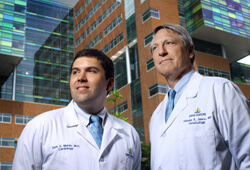
Cardiovascular Report
June 19, 2013

“In nearly one out of four samples in the desirable range for people with a higher heart disease risk, the Friedewald equation had it wrong,” says Seth Martin, a clinical fellow at the Johns Hopkins Ciccarone Center for the Prevention of Heart Disease. “As a result, many patients may think they achieved their LDL cholesterol target of less than 70 when, in fact, they may need more aggressive treatment to reduce their risk.” Martin is the lead author of the study published in the Journal of the American College of Cardiology.
The lipid profiles came from a lab in Birmingham, Alabama. The researchers collaborated with the lab to develop the database for the study.
Steven Jones, director of inpatient cardiology at Johns Hopkins and senior author, says based on their findings, many patients—especially those with high triglyceride levels — may have a false sense of assurance that their LDL cholesterol targets have been met.
As an alternative to Friedewald, Jones suggests looking at non-HDL cholesterol as a more accurate way to assess risk. “It is a much better target for quantifying risk of plaques in coronary arteries. It would be simpler, more consistent, and would enable us to provide a better assessment.”
The database used in the study is registered on the website www.clinicaltrials.gov and will be an important resource for ongoing scientific investigation.

